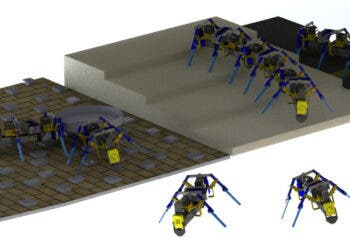
Empathy is the experience of understanding another person’s thoughts, feelings, and condition from his or her point of view, rather than from one’s own. Scientists have sought to explain the origin of this defining human psychological ability in relation to cooperation. However, a new study by researchers at the Max Planck Institute and the Santa Fe Institute makes a convincing case that a broad range of empathetic response is rooted in cognitive simulations which aren’t necessarily geared towards cooperation with other individuals.
We need to read the minds of other people, so empathy was born
Previous efforts to understand the evolutionary origins and underlying mechanisms of empathy focused on coordination and cooperation among individuals. By being able to read the emotions and intentions of other individuals, we were better equipped to meet their needs and navigate complex social strata, or so the theory goes.
Fabrizio Mafessoni, who is a post-doctoral researcher at the Max Planck Institute for Evolutionary Anthropology, has a different take on empathy. He and Michael Lachmann, a theoretical biologist at the Santa Fe Institute, propose that empathetic responses could have evolved in the absence of kin selection or other cooperative mechanisms. Examples of empathetic responses that we all use include emotional contagion, contagious yawning, and pathologies like echopraxia (compulsive repetition of others’ movements) and echolalia (compulsive repetition of others’ speech).
The researchers say that the minds of other people can be seen as ‘black boxes‘, in the sense that we cannot read their content. However, seeing how we all own the same type of black boxes, individuals “are constantly running simulations of what other minds might be doing.” This behavior isn’t necessarily geared towards cooperation — although empathy can definitely enhance cooperative behavior — but rather encompasses a broader set of outcomes. It’s just something that members of our species, as well as other animals, do spontaneously.
Biologically speaking, this process may be enabled by mirror neurons — neurons that fire not only when performing a motor action, but when we imagine or see other people performing the same actions a swell.
Mafessoni and Lachmann designed a new model that was mainly rooted in cognitive simulation, and then observed how virtual actors performed when engaged in as-actor simulations. A variety of the systems produced by the simulation can be explained in terms of cooperation and kin-selection. However, the model also produced scenarios where an actor occasionally coordinates with others even when the outcome is not advantageous. This seems to suggest that empathetic reactions and systems did not evolve solely for cooperation and kin-selection — they may also have evolved because animals need to more broadly envision the actions of others.
“We show that these mechanisms are advantageous in complex environments, by allowing an observer to use information about its own behavior to interpret that of others. However, without inhibition of the recruited neural circuits, the observer would perform the corresponding downstream action, rather than produce the appropriate social response. We identify evolutionary trade-offs that could hinder this inhibition, leading to emotional contagion as a by-product of mind-reading. The interaction of this model with kinship is complex,” the reserachers wrote.
According to Mafessoni, “the very origin of empathy may lie in the need to understand other individuals.”
The findings appeared in the journal Scientific Reports.






